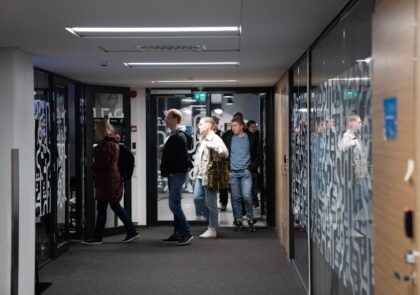
Diversity and inclusion have been at the forefront of businesses these days. An increasing number of companies are better aware of how diversity and inclusion could play a role in taking their business to the next level in terms of sales, profitability, organisational culture, talent attraction, employee retention, or customer satisfaction, to name a few. Nevertheless, the road to successful implementation of diversity and inclusion of numerous companies is still paved with plenty of adversity. Let’s take a closer look at three most crucial reasons why a lot of businesses have failed at their diversity and inclusion efforts.
Authors: Huy To & Jaana Häkli
Acting on assumptions
Assumptions are considered to be the most common reason for failure of diversity and inclusion efforts. As an example, many organisations are slightly overconfident about their inclusion work, assuming that they have done a good job in and for inclusion while their organisational members are not of the same opinion (To 2021, 64). Assumptions are merely feelings about an occurrence of something without any solid evidence. In this regard, assumption-based actions that many companies are taking right now to address diversity and inclusion are of little avail due to subjectivity and myopia. Given the concept of diversity and inclusion which is complicated by nature, assumption-based actions could only help in noticing the symptoms but not diagnosing the exact cause of the problem. This is not to mention the fact that the symptoms might be improperly identified, which is likely to drive companies towards a wrong direction and wrong deeds.
On the other hand, assumptions can be conceived of as a form of bias in disguise. When companies make decisions on the grounds of their own beliefs, feelings, and speculations with no proof whatsoever, they often think that their decisions are finalised neutrally. However, what people are most concerned about in this respect is how impartiality is seen or illustrated in such decision-making. Therefore, assumptions may seem to be another version of the so-called unconscious bias – the concept that is much-talked-about and that is to be tackled when it comes to diversity and inclusion.
What to do?
Deep conversations about how companies value diversity and inclusion do not help when they face challenges related to diversity and inclusion. In order to handle assumption-based and vague decision-making, companies need proof and evidence. They need to set clear goals, KPIs (Key Performance Indicators), measures, and metrics concerning, let’s say, what to do, how to do, why this approach is chosen over the other, or who is in charge. When data is available, actions must be taken to bring about change.
Taking rigid approach
Many companies have seen diversity and inclusion just as an act of organisational responsibility or have done diversity and inclusion merely to comply with the national Non-discrimination Act. Diversity and inclusion are real business assets, but many may be wondering what diversity and inclusion have to do with, for instance, business profitability. That explains why a number of companies are rather forcibly executing diversity and inclusion because of their duty not because of their willingness to diversify and include their workforce. (To 2021, 67-68.) In this case, they tend to tackle diversity and inclusion as a series of policies, systems, practices, and programmes which are fragmented, unconnected, and thus ineffective.
What to do?
Diversity and inclusion genuinely provide companies with a competitive edge in the market from varied perspectives. They should embrace this fact in a way that acknowledges diversity and inclusion as a strategic priority to improve the whole organisation at large. Companies need to change their attitude towards an integrated approach to diversity and inclusion in place of such a rigid approach aforementioned. An integrated approach to diversity and inclusion is a holistic approach in which companies view diversity and inclusion as key business benefits beyond their responsibility and duty (To 2021, 68). Especially in the context of Finnish work life, diversity and inclusion should become a passion for business growth (Sultanova 2019).
Trying to change individuals
It is easy for companies to suggest that changing behaviour of individuals is a necessary part of building diversity and inclusion. Behavioural change only helps solve the problems on the surface and on the spot. The same improper manner may take place, for instance, in another department within the organisation or in a different subsidiary of the organisation. Behavioural change does not place long-term impacts on diversity and inclusion. It is incumbent not on the individuals but the structural and systemic issues. This may explain why programmes which are aimed at helping the marginalised population overcome self-doubt or the feeling of exclusion hardly ever come to fruition. At worst, these programmes may well exert unfair burden on the individuals who belong to the minority.
What to do?
Companies should focus on structural change in order to improve their diversity and inclusion endeavours. Deep-rooted prejudices that underlie organisational policies, systems, programmes, and practices are to be diagnosed and addressed to create a healthy work environment instead of self-help programmes targeted at, for example, underrepresented groups.
Some food for thought
Recruiters need to start to use anonymous applications in their recruitment processes to avoid unconscious biases and simply ignoring a good candidate just based on personal data such as name, nationality/ethnicity, age, gender, etc. There is structural racism in the Finnish job market and people of different ethnicities and nationalities have different kinds of value in the Finnish job market. According to the research of Ahmad from 2019 a Finnish woman has the highest value and a Somalian man the lowest in the Finnish job market. (Martti et al. 2019.) Recently educated international talents have gone into extremes and changed their names to be more attractive in the Finnish job market (Koskela 2021). This is horrifying – a violation against human rights and the identity of the individual. More awareness on diversity and inclusion as well as a change in attitudes is needed. Recruiters should internalise TalentHUB South Karelia’s slogan: Put competences first – choose the best one!
References
Koskela, M. 2021. Nimi vaihtoon. [Cited 20 Dec 2021]. Available at: https://yle.fi/uutiset/3-12194198
Martti, E. & Pietarinen, E. & Mäntymaa, E. 2019. Suomalainen nimi on valtava etu Suomen työmarkkinoilla – tutkija lähetti tuhansia työhakemuksia eri nimillä ja tulokset hätkähdyttivät. [Cited 20 Dec 2021]. Available at: https://yle.fi/uutiset/3-11023468
Sultanova, K. 2019. The Missing Link in Making Diversity & Inclusion Work in Finland: Investing in Social Capital. [Cited 19 Dec 2021]. Available at https://kamillasultanova.com/the-missing-link-in-making-diversity-inclusion-work-in-finland-investing-insocial-capital/
To, H. 2021. From Diversity to Inclusion: A Transformational Strategy of Corporate Culture Development. Bachelor’s thesis. LAB University of Applied Sciences, Faculty of Business and Hospitality Management. Lappeenranta. [Cited 19 Dec 2021]. Available at: https://urn.fi/URN:NBN:fi:amk-2021120924794
Authors
Huy To is Bachelor Student in LAB Tourism and Hospitality Management study programme graduating in December 2021.
Jaana Häkli is a senior lecturer at LAB University of Applied Sciences and works as a project specialist for TalentHUB South Karelia project.
Illustration: https://pxhere.com/fi/photo/1452903 (CC0)
Published 21.12.2021
Reference to this article
To, H. & Häkli, J. 2021. Why are companies struggling with their diversity and inclusion efforts? LAB Pro. [Cited and date of citation]. Available at: https://www.labopen.fi/lab-pro/why-are-companies-struggling-with-their-diversity-and-inclusion-efforts/






